Resources
About Us
Ultrasound Market Size, Share, Forecast, & Trends Analysis by Component (Device, Probe) Technology (3D, Doppler) Display (Color, B/W) Portability (Cart, Handheld, POC) Application (Cardiology, Therapeutic, Vascular) End User - Global Forecast to 2032
Report ID: MRHC - 104271 Pages: 250 Jan-2025 Formats*: PDF Category: Healthcare Delivery: 24 to 72 Hours Download Free Sample ReportThe Ultrasound Market is expected to reach $18.07 Billion by 2032, at a CAGR of 5.8% from 2025 to 2032. The growth of the ultrasound market is driven by the aging population with chronic disorders, advancements in ultrasound device technology, the rising number of diagnostic imaging centers and hospitals, the rising incidence of orthopedic injuries and musculoskeletal disorders, and the increasing public & private investments, funding, and grants for ultrasound device development.
Furthermore, the emergence of point-of-care ultrasound devices and the demand from emerging economies are expected to create market growth opportunities.
The aging population and shifts in societal behaviors are significant factors contributing to a consistent rise in the prevalence of chronic diseases, which has led to an increased demand for ultrasound procedures. The "World Population Ageing 2020" report published by the Department of Economic and Social Affairs, United Nations, highlights that the global population of individuals aged 65 or above was 727 million in 2020. This number is projected to reach 1.5 billion by 2050.
Furthermore, knee pain is highly prevalent among the elderly population, often linked to knee osteoarthritis, a condition that can be diagnosed using ultrasound. Additionally, lung cancer ranks among the most widespread chronic illnesses. According to GLOBOCAN, lung cancer cases are projected to rise from 2.21 million in 2020 to approximately 3.63 million in 2032.
The elderly population also faces the risk of malnutrition, which can result in increased frailty, reduced quality of life, and higher mortality rates. Malnutrition often leads to a decrease in muscle mass, affecting muscle strength. In this context, researchers have explored the use of ultrasonography to measure muscle thickness as a means of nutritional assessment in older adults.
Thus, the increasing prevalence of chronic diseases coupled with the rising geriatric population is expected to boost the adoption of ultrasound devices, driving the growth of this market.
 Click here to: Get Free Sample Pages of this Report
Click here to: Get Free Sample Pages of this Report
Musculoskeletal disorders are linked to both occupational injuries and age-related dysfunction. Common musculoskeletal conditions include rheumatoid arthritis, osteoarthritis, osteoporosis, and septic arthritis. Among the elderly population, bone fractures and broken hips are prevalent orthopedic injuries.
Globally, many individuals experience musculoskeletal conditions. For instance, according to the World Health Organization (WHO) 2021, approximately 1.71 billion people worldwide are affected by musculoskeletal conditions. Furthermore, the WHO predicts a rise in disabilities related to musculoskeletal disorders in the coming decades.
Furthermore, the older population often faces age-related issues such as joint pain, arthritis, and osteoporosis. Arthritis is prevalent among adults, affecting millions of individuals worldwide. According to the CDC, approximately 63.0 million people in the U.S. were diagnosed with arthritis in 2020, with projections indicating that this number could reach 78.4 million by 2040. These orthopedic conditions have increased the demand for ultrasound devices to analyze and diagnose these disorders.
Traditionally, benchtops or conventional ultrasound devices have dominated the market. However, there has been a rise in the adoption of wearable ultrasound devices. These devices leverage advancements in miniaturization, wireless connectivity, and ergonomic design. These wearable ultrasound devices are compact and lightweight and can be comfortably worn on the body, enabling healthcare providers to conduct ultrasound examinations virtually anywhere, from point-of-care settings to remote locations and even during emergencies.
Wearable ultrasound devices offer the advantage of imaging without requiring the patient to remain stationary in one place. Several wearable ultrasound devices have gained approval or are currently in various stages of development.
Even with handheld systems, there is a need to streamline the learning curve for novice users to effectively utilize ultrasound imaging. Even experienced users require time and attention to fine-tune the image, diverting their focus away from the patient. As a result, artificial intelligence (AI) has become crucial to leverage the full potential of handheld ultrasound devices by automating image optimization and providing guidance on probe positioning. For instance, AI can play a pivotal role in automatically enhancing image quality and assisting users in probe placement. With AI integrated into handheld ultrasound devices, clinicians can simply position the scanner on a specific area of the abdomen, and the software autonomously identifies the organ and optimizes the image quality without requiring manual intervention.
Furthermore, AI is revolutionizing ultrasound technology by automating labor-intensive tasks such as quantification, selecting optimal image slices from 3D datasets, visually mapping and annotating screened anatomy, and enabling hands-free operations through voice recognition. For instance, the Konica Minolta Sonimage HS1 leverages AI-powered voice recognition to facilitate hands-free operation.
In earlier years, medical imaging primarily served as a diagnostic tool. However, due to technological advancements, it now plays a crucial role in treating, managing, and predicting diseases. Medical imaging has become indispensable for diagnosing and treating major medical conditions like cancer, cardiovascular disease, musculoskeletal issues, urological conditions, and more. Among these, ultrasound machines have gained widespread use in diagnostic medical imaging due to their safety compared to X-ray machines. Technological improvements in ultrasound machines have revolutionized patient care and enhanced diagnostic accuracy, increasing overall patient outcomes.
Ultrasound machines are becoming increasingly portable, lightweight, and compact. The integration of dual-probe technology, which combines two transducers into a single probe, has resulted in more accurate, dependable results, offering high-quality imaging and swift diagnostics at an affordable cost. These advancements empower medical professionals to view internal body structures and organs directly on smartphones.
3D/4D ultrasound has gained significant traction in maternity and obstetric scanning and is increasingly used for procedural planning and guidance. 3D imaging technology equips clinicians with clearer anatomical images, enhancing interventions and surgical planning. For instance, Philips TrueVue and GlassVue are advanced 3D ultrasound display methods that provide an early and photorealistic fetal image.
Based on component, the market is segmented into ultrasound devices, transducers/probes, gels, and other components. In 2025, the ultrasound devices segment is expected to account for the largest share of the ultrasound market. Ultrasound devices are machines that use direct high-frequency sound waves to make images to examine the organs present inside the body of a patient. The large market share of this segment is attributed to factors such as the demand for minimally invasive surgery is a major driver for the ultrasound devices market. Technologically advanced ultrasound devices enable high-resolution real-time imaging of soft tissue configurations, making ultrasound-guided techniques increasingly prevalent in minimally invasive surgeries.
Based on technology, the market is segmented into diagnostic ultrasound and therapeutic ultrasound. In 2025, the diagnostic ultrasound segment is expected to account for a larger share of the ultrasound market. Diagnostic ultrasound is done to show structures inside the body and help healthcare providers to guide and diagnose and treatment for various diseases, chronic conditions, or injuries. The large market share of this segment is attributed to factors such as its simplicity, cost-effectiveness, real-time imaging capability, and portability. It is widely recognized as the preferred standard technology for detecting abnormalities and facilitating diagnosis.
Based on display, the market is segmented into colored displays and black and white (B/W) displays. In 2025, the colored display segment is expected to account for the largest share of the ultrasound market. Colored display ultrasounds are devices that display a colored picture or image of the parts of the body that are scanned. The large market share of this segment can be attributed to the benefits offered by colored display ultrasound, such as clear visualization of blood flow, detection of abnormalities in the hemodynamics of the bloodstream, and identification of speed and directions of the blood flow.
Based on portability, the market is segmented into cart/trolley-based ultrasound systems, handheld/compact ultrasound systems, and point-of-care ultrasound systems (POCUS). In 2025, the cart/trolley-based ultrasound systems segment is expected to account for the largest share of the ultrasound market. The large market share of this segment is attributed to the advantages offered by these systems over handheld ultrasound devices, such as a wider range of high image quality and imaging capabilities. Additionally, cart-based ultrasound machines, being bulkier and more powerful than handheld devices, are commonly preferred in clinical settings such as hospitals, clinics, and diagnostic imaging centers. Furthermore, these machines are mounted on carts, providing stability and enabling easy mobility between patient rooms.
Based on application, the market is segmented into diagnostic applications and therapeutic applications. In 2025, the diagnostic applications segment is expected to account for the largest share of 65% of the ultrasound market. The large market share of this segment is attributed to the increasing awareness of the importance of early diagnosis of diseases, advancements in diagnostic imaging technology, and the extensive range of diagnostic applications for ultrasound devices.
Based on end user, the market is segmented into hospitals & clinics, diagnostic care centers, ambulatory care centers, and academic & research institutes. In 2025, the hospitals & clinics segment is expected to account for the largest share of 44.3% of the ultrasound market. This segment’s large market share can be attributed to the increasing hospitalizations linked to chronic diseases in aging populations, rising healthcare expenditure, high adoption of advanced imaging modalities in hospitals, the demand for cost-effective products to manage healthcare expenses, growing emphasis on point-of-care services for patients, and the expansion of healthcare facilities in emerging economies.
In 2025, North America is expected to account for the largest share of 34.9% of the ultrasound market, followed by Europe, Asia-Pacific, Latin America, and the Middle East & Africa. North America’s significant market share can be attributed to the increasing preference for minimally invasive surgery, rising incidence of chronic disorders, growing occurrences of orthopedic injuries, and advancements in ultrasound imaging technology. Healthcare expenditure is a significant factor that defines healthcare quality for the population. The health expenditure of North America increased to 18.3% of GDP in 2020, an increase from 16.2% in 2019 (Source: The World Bank). This increase in healthcare spending signifies a heightened focus on ensuring the population's health and is anticipated to drive the increased adoption of advanced ultrasound technologies in the region.
However, the market in Asia-Pacific is projected to register the highest CAGR of 8.6% during the forecast period. The growth of this regional market is driven by the increasing prevalence of orthopedic injuries and cancer, the aging population, government initiatives aimed at promoting early diagnosis of diseases, growing adoption of advanced medical technologies, improving healthcare infrastructure, rising healthcare expenditure, and insurance coverage.
The report offers a competitive analysis based on an extensive assessment of the leading players’ product portfolios and geographic presence and the key growth strategies adopted by them over the past 3–4 years. Some of the key players operating in the ultrasound market are GE Healthcare Technologies Inc. (U.S.), Konica Minolta, Inc. (Japan), Koninklijke Philips N.V. (Netherlands), Siemens Healthineers AG (Germany), Canon Inc. (Japan), Esaote S.p.A (Italy), Shenzhen Mindray Bio-Medical Electronics Co., Ltd (China), Samsung Medison Co., Ltd. (South Korea), FUJIFILM SonoSite, Inc. (A Subsidiary of FUJIFILM Holdings Corporation) (U.S.), and Hologic, Inc. (U.S.).
In November 2024, Siemens Healthineers AG (Germany) launched ACUSON Maple, an ultrasound system powered with AI to optimize everyday clinical performance for users of all skill levels.
In October 2024, GE Healthcare Technologies, Inc. (U.S.) launched Venue Family point-of-care ultrasound systems. These systems include Caption Guidance, artificial intelligence (AI) based technology that provides real-time guidance for capturing diagnostic-quality cardiac images.
|
Particulars |
Details |
|
Number of Pages |
250 |
|
Format |
|
|
Forecast Period |
2025–2032 |
|
Base Year |
2024 |
|
CAGR (Value) |
5.8% |
|
Market Size (Value) |
USD 18.07 Billion by 2032 |
|
Segments Covered |
By Product
By Technology
By Display
By Portability
By Applications
By End User
|
|
Countries Covered |
North America (U.S., Canada), Europe (Germany, France, U.K., Italy, Spain, Rest of Europe), Asia-Pacific (Japan, China, India, and Rest of Asia-Pacific), Latin America (Brazil, Mexico, and Rest of Latin America), and Middle East & Africa |
|
Key Companies |
GE Healthcare Technologies Inc. (U.S.), Konica Minolta, Inc. (Japan), Koninklijke Philips N.V. (Netherlands), Siemens Healthineers AG (Germany), Canon Inc. (Japan), Esaote S.p.A (Italy), Shenzhen Mindray Bio-Medical Electronics Co., Ltd (China), Samsung Medison Co., Ltd. (South Korea), FUJIFILM SonoSite, Inc. (A Subsidiary of FUJIFILM Holdings Corporation) (U.S.), and Hologic, Inc. (U.S.) |
This market study covers the sizes & forecasts of the ultrasound market, segmented based on component, technology, display, portability, application, end user, and geography. It also provides the value analysis of various segments and sub-segments of the global ultrasounds market at country levels.
The ultrasound market is projected to reach $18.07 billion by 2032, at a CAGR of 5.8% during the forecast period.
The ultrasound devices segment is expected to account for the largest share of the market in 2025. This segment’s large market share can be attributed to the high demand for handheld ultrasound devices due to their benefits, such as enhanced patient throughput, heightened patient engagement, simplified operation, and increased convenience.
Among end users, in 2025, the diagnostic imaging centers segment is slated to register the highest CAGR in the market. This growth can be attributed to the proliferation of diagnostic imaging centers and the adoption of advanced cart-based ultrasound systems within these centers.
The growth of the ultrasound market is attributed to factors such as the aging population with chronic disorders, advancements in ultrasound device technology, the rising number of diagnostic imaging centers and hospitals, the rising incidence of orthopedic injuries and musculoskeletal disorders, and the increasing public & private investments, funding, and grants for ultrasound device development. Furthermore, the emergence of point-of-care ultrasound devices and the demand from emerging economies are expected to offer significant growth opportunities for companies in the ultrasound market.
The key players profiled in the ultrasound market report are GE Healthcare Technologies Inc. (U.S.), Konica Minolta, Inc. (Japan), Koninklijke Philips N.V. (Netherlands), Siemens Healthineers AG (Germany), Canon Inc. (Japan), Esaote S.p.A (Italy), Shenzhen Mindray Bio-Medical Electronics Co., Ltd (China), Samsung Medison Co., Ltd. (South Korea), FUJIFILM SonoSite, Inc. (A Subsidiary of FUJIFILM Holdings Corporation) (U.S.), and Hologic, Inc. (U.S.).
Countries like China and India are projected to offer significant growth opportunities for vendors operating in this market due to the growing awareness about chronic diseases and their diagnosis, increasing geriatric population, proliferation of hospitals, and increasing investments in the healthcare sector.
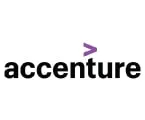

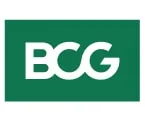

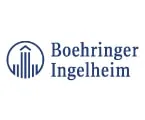

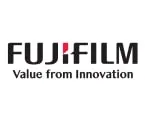
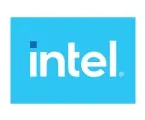

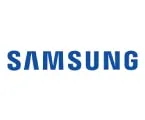





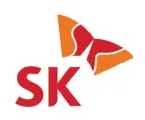
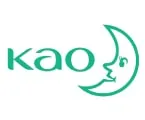

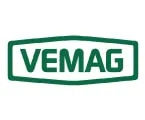
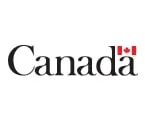

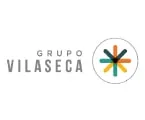


Published Date: Jan-2025
Published Date: Jan-2025
Published Date: Mar-2024
Published Date: Mar-2024
Please enter your corporate email id here to view sample report.
Subscribe to get the latest industry updates